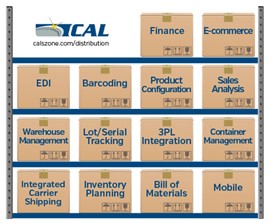Every enterprise maintaining an inventory comprehends the intricate balancing act that inventory management entails. Companies must always ensure they have sufficient products available to cater to fluctuating customer needs. Yet, maintaining excess stock can result in unnecessary waste. According to a study by materials provider Avery Dennison, an alarming 8% of inventory goes to waste annually, amounting to a staggering $163 billion in wasted resources.
Surviving in a market characterized by such wastage due to poor inventory management can be a daunting task. This necessitates the need for reliable technology, specifically an integrated inventory management system supported by an ERP solution hosted in the cloud.
Streamlining Inventory Management with Acumatica, a Cloud-Based ERP System
Incorporating inventory management software within a cloud-hosted ERP solution can significantly simplify inventory processes. Replacing the traditional pen and paper approach, this solution allows data entry, access, and stock control across multiple warehouses from a user-specific dashboard.
 The efficiency of a cloud-based ERP system lies in its ability to integrate all business operations. Upon installation, the ERP solution becomes the backbone of the organization, continuously processing real-time data from every department. This unified database of accurate, up-to-date information can be accessed anytime, anywhere by authorized users.
The efficiency of a cloud-based ERP system lies in its ability to integrate all business operations. Upon installation, the ERP solution becomes the backbone of the organization, continuously processing real-time data from every department. This unified database of accurate, up-to-date information can be accessed anytime, anywhere by authorized users.
Such an integrated database, unifying all business aspects, aids in daily tasks like the pick-pack-and-ship process and inventory counting and location. Moreover, it provides unique benefits related to inventory management, such as automated stock replenishment and data-backed decision-making.
Orchestrating and Automating Replenishment
Inventory replenishment is more than just detecting a product shortage and reordering it. It involves a detailed process that requires:
- Accurate inventory data.
- Precise demand forecasting using sales and customer data.
- Tracking and predicting lead times.
- Understanding customer preferences.
- And many more aspects.
Failure to manage the replenishment process effectively could put businesses at risk of production delays, lost sales, and customer attrition, as reported by TechTarget.
Cloud-based ERP systems help mitigate these risks using two strategies. First, they collect, store, and provide real-time, accurate data. Second, they offer robust inventory and replenishment automation features that reduce the probability of human errors. Thus, using ERP data to forecast models (minimum/maximum economic order quantities, reorder points, seasonality, lead times, safety stock, etc.), items can be replenished automatically. This ensures that the inventory remains adequately stocked and that replenishment aligns with sales.
The automation of the replenishment process saves time, resources, and energy, preventing overstocking or under-stocking of inventory.
Leveraging Data for Actionable Insights
An ERP system integrated with inventory management software offers a comprehensive view of the organization, enabling data collection from various sources. Employees from all departments—sales, marketing, operations, finance, and more—can access relevant, up-to-date information for informed decision-making. Built-in analytics features in cloud-based ERP systems allow the use of inventory data to track the cost of goods sold, monitor inventory carrying costs, assess turnover rates, identify trends, highlight low/dead-stock items, analyze profitability, and more.
These insights can enhance efficiency, reduce costs, and set a promising trajectory for your business.
CAL Business Solutions: Your Partner in Inventory Management with Acumatica
While an ERP system integrated with inventory management software offers numerous benefits, choosing the right ERP solution and partner is crucial.
Acumatica Cloud ERP, our award-winning, cloud-based business management solution, has been a perfect fit for many businesses, including Frederick Block, Brick & Stone (FBBS). Read the full success story here.
 Specialty orders that need some fabrication are routine at FBBS. The company sells a lot of products from various manufacturers that combine a large number of SKUs. Fabrication requests and special orders made tracking those orders and inventory in its legacy software nearly impossible, involving a lot of time and manual effort.
Specialty orders that need some fabrication are routine at FBBS. The company sells a lot of products from various manufacturers that combine a large number of SKUs. Fabrication requests and special orders made tracking those orders and inventory in its legacy software nearly impossible, involving a lot of time and manual effort.
“With Acumatica, we can see what we have. Gaining visibility like that has been a huge improvement,” said Steve Slaughter, President/CEO Frederick Block. “With our specialty orders and fabrication, we couldn’t just set up a SKU before.” CAL Business Solutions helped FBBS configure Acumatica to identify and categorize different lot sizes, specialty work, and nontraditional work to be easily accessible and identifiable.
“Acumatica can be configured to do all the things we needed for our industry, but it also has the flexibility to go above and beyond,” Slaughter says.
Acumatica’s comprehensive, user-friendly solution and robust inventory management software enabled them to:
- Connect disparate business applications into one integrated system, streamlining order entry operations
- Acquire deeper access to financial data, enhancing decision-making strategy
- Gain remote access to secure cloud-based system allowing employees to work from anywhere
- Substantially improve inventory visibility with the use of the intercompany module, increasing accuracy and the ability to locate products instantly across three locations
- Acquire a modern business platform for future growth while also avoiding expensive technology infrastructure costs
Acumatica Cloud ERP’s capabilities go beyond the functionalities mentioned above. If you want to learn more about how Acumatica can revolutionize your business, contact our experts today.
Discover More About Inventory Management with Acumatica
Are you ready to evaluate a new ERP system? Contact CAL Business Solutions. 860-485-0910 x4 or sales@calszone.com.
By CAL Business Solutions, Acumatica and Microsoft Dynamics GP/365 BC Partner, www.calszone.com

















